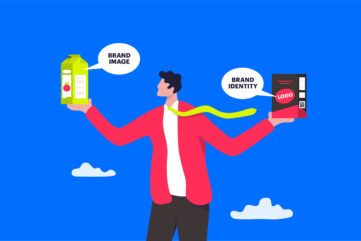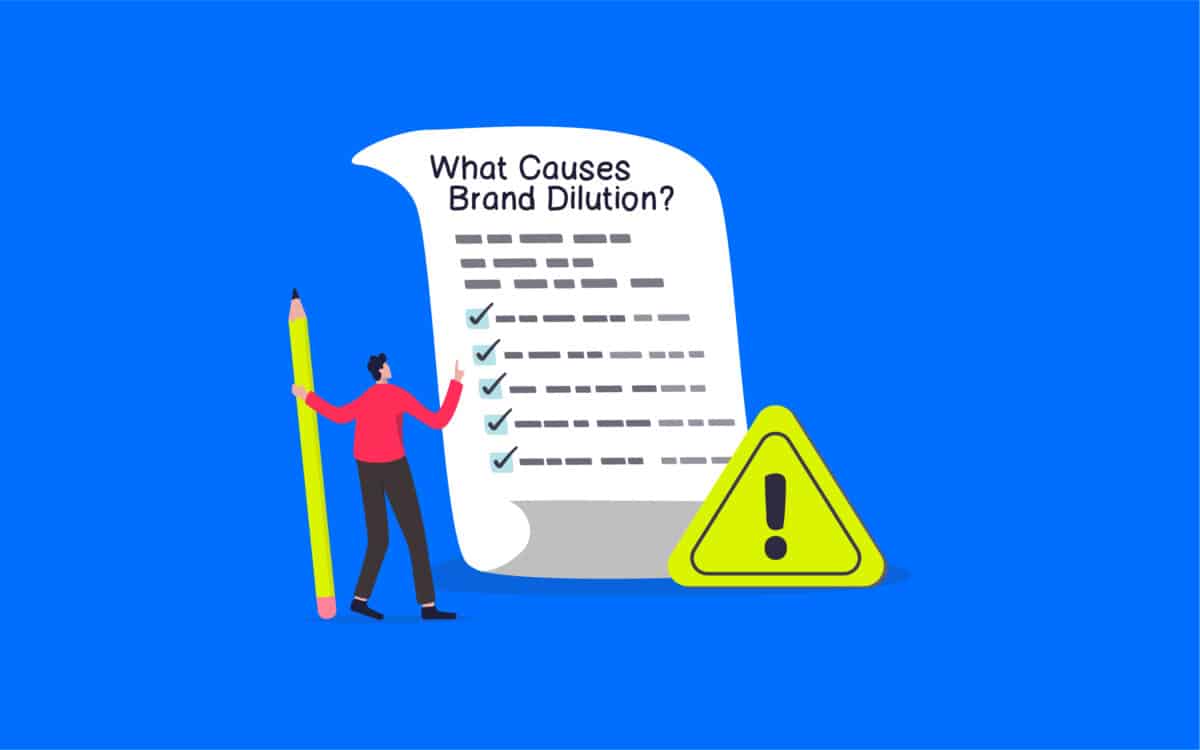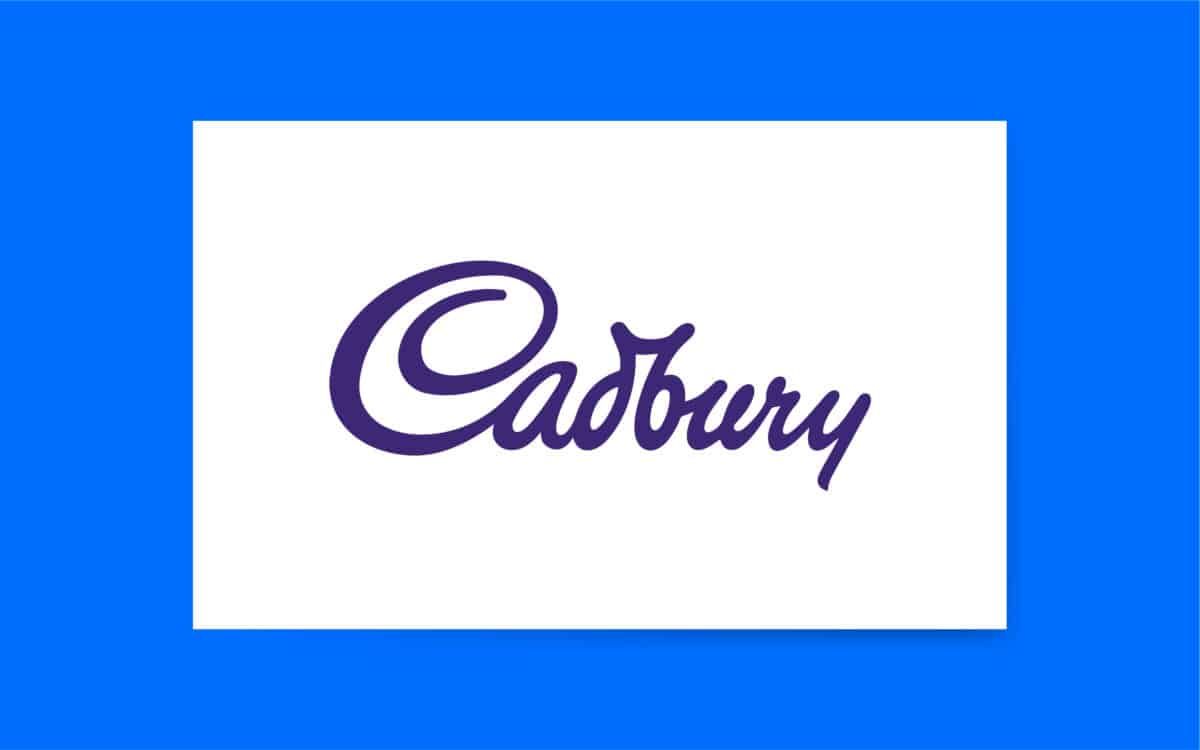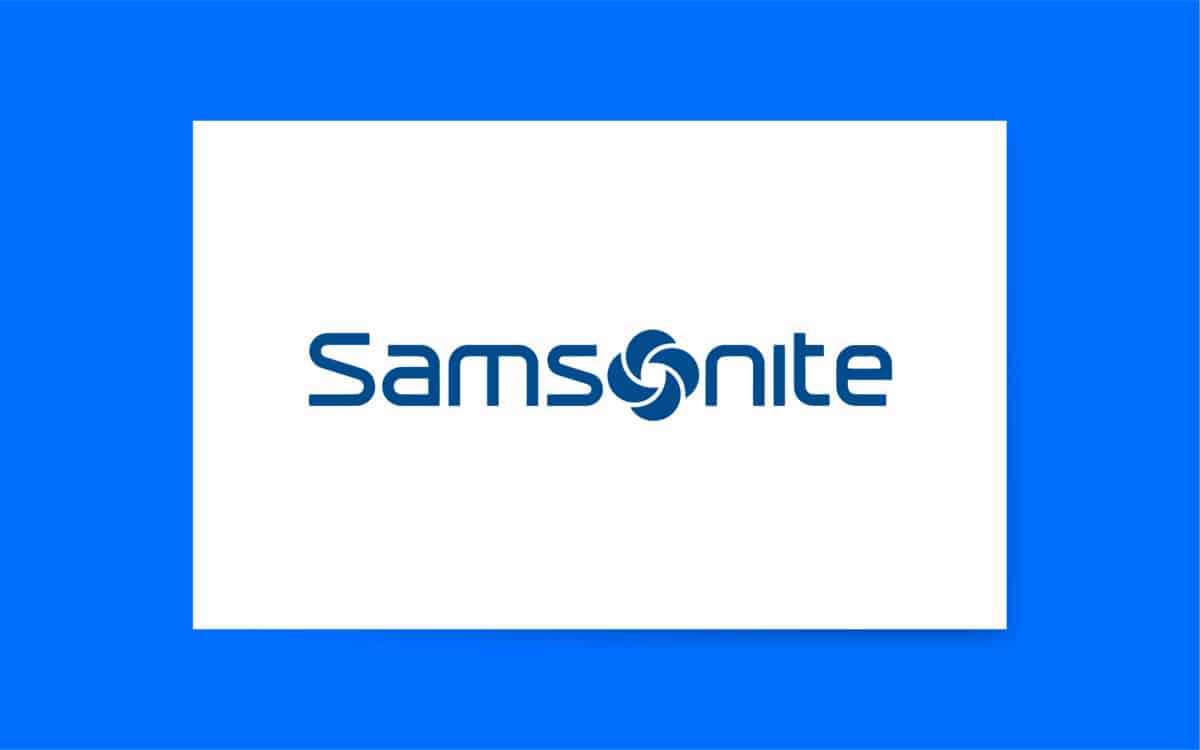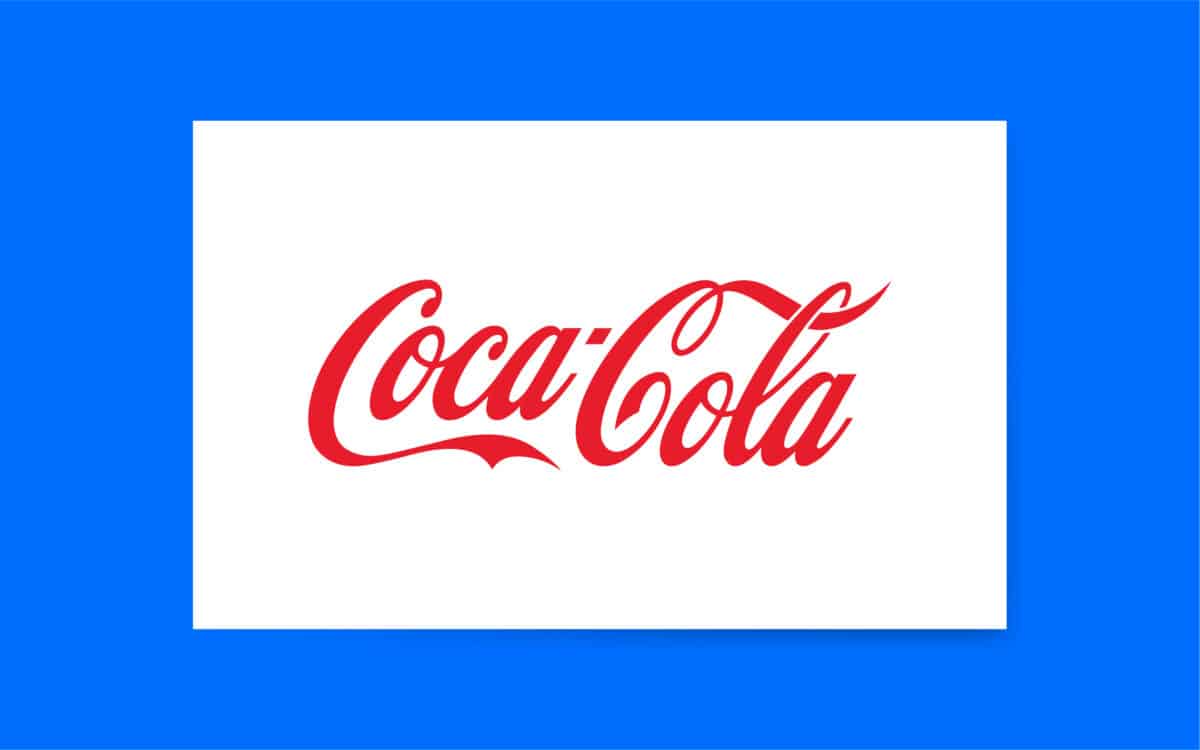What is brand dilution? The complete brand dilution definition with examples

What is brand dilution? You might have heard this phrase when speaking to brand strategists or marketing experts about how you can extend your company into new marketplaces or when you’ve read articles about brand growth.
Brand dilution is one of the core pitfalls any growing business needs to watch out for as it evolves and expands. No matter how well-received and popular your current brand is, stretching your identity too thin too quickly can lead to issues with your perception.
After all, while most companies look for ways to start growing their target audience and potential revenue streams, eventually, not every brand growth campaign will be successful.
When you attempt to increase your profits and explore new opportunities with products that aren’t relevant to your brand or invest in marketing efforts that harm your overall image, you “dilute” your brand.
Just as adding too much water or other ingredients to a soup will diminish its flavor, brand dilution can influence how your company resonates with its audience.
Today, we will look at brand dilution, how it happens, and why it can be a major problem for your business.
What is brand dilution? Brand dilution definition
Let’s start with the basics: what is brand dilution?
Brand dilution is what happens when a brand extension goes wrong. Essentially, when your brand is diluted, it loses some of its value as a result of overuse and overextension.
When you try and stretch your business too thin, introducing products and services that don’t resonate with your audience, core aspects of your identity are diminished.
Brand dilution weakens your brand by obfuscating your message, values, and core promise. Think of it like adding too many ingredients to a meal. The core flavor of the food is lost.
Typically, brand dilution occurs when a company releases a product or service that doesn’t align with its mission or value.
For instance, if you’re running a luxury clothing store, and you notice a certain type of children’s toy is gaining a lot of traction in the market, you might attempt to introduce your own version of that toy to attract new customers and increase profits.
However, because the product doesn’t align with the needs of your target audience or niche, it doesn’t attract the right attention. Similarly, it leaves your existing audience questioning what your core vision and values actually are.
Brand dilution can even harm your overall reputation by making it appear as though you’re more interested in chasing profits than serving your core customer base.
The damage caused by brand dilution
There’s nothing wrong with a company expanding its product portfolio and vision over time. However, the products and services you introduce to your customers should still be relevant to your company’s core mission and values, even if your niche audience expands.
A luxury fashion company introducing a new collection of children’s clothing, footwear options, or accessories won’t necessarily dilute its brand unless the quality of the items diminishes. However, branching out into irrelevant sectors raises questions about what your business is all about.
Brand dilution can reduce customer loyalty, harm your credibility as a company, and convince your audience you don’t have their best interests at heart.
The core problems caused by brand dilution include:
Weakening of brand equity
Excessive brand extension harms the equity or value of your brand. It detracts from your image as a credible authority in your industry and leaves customers questioning where your values lie.
Reduction in product value
Sometimes, when a company spreads itself too thin, too fast, it needs to cut corners when creating quality products to save money for growth. This can damage the overall value of the original items being sold, as well as any new products.
Loss of brand loyalty
If customers begin to question your values or vision, their affinity with your company will diminish.
Not only could you struggle to connect with the customers you’re trying to reach (because they’re not connected with your core brand), but you could lose the loyalty and custom of the audience you’re already pursuing.
Brand dilution vs brand extension vs brand cannibalization
When seeking out the definition of brand stretching or brand dilution, some companies can confuse the term with some other well-known concepts in the branding world.
Brand dilution is the phrase used to refer to an instance wherein a company’s brand equity is diminished due to an unsuccessful “brand extension.” However, brand dilution and brand extension aren’t necessarily the same thing.
Brand extension refers to when companies leverage existing brand awareness and recognition to develop new revenue streams.
Reese’s, one of the world’s best-known confectionary brands, successfully extended into the cereal landscape to serve a wider range of customers. Because the company was already well-known in the food industry, the extension made sense to customers.
However, if a company tries to branch out into an area that doesn’t resonate with its existing brand identity or mission, the extension will often fail, leading to brand dilution. For instance, when Pillsbury tried to create frozen microwave popcorn, it didn’t make sense to its target audience.
Another term commonly connected to brand dilution and extension is “brand cannibalization.” While cannibalization in the sales and marketing world is often seen as a negative thing, it’s not always as problematic as it may appear in the branding world.
Brand cannibalization is what happens when a company develops an “extension” for its company that competes with an existing product. For instance, when Apple released the iPad, a portable computing product, the sales of its Macintosh computers decreased.
Even though this sounds like a counter-intuitive business strategy, it made sense for Apple, as it allowed them to increase sales in another area and begin building brand value for a new style of product.
What causes brand dilution?
Ultimately, brand dilution occurs most often when companies don’t have the right brand strategy in place or fail to preserve their missions and vision when branching out into a new landscape.
When it comes to defining what dilutes the brand in a failed extension strategy, numerous factors can play a part. Some of the core factors which might lead to brand dilution include:
Licensing
Partnering with other companies is an excellent way to increase revenue and brand reach, but not every strategy is guaranteed to be successful. Licensing involves renting or leasing a trademarked asset for use with another product or service.
A popular cookie brand might license its recipe to a chocolate company for use in a new chocolate bar.
However, licensing can lead to brand dilution when the product licensed is unrelated to the collaborating brand. For instance, it wouldn’t make much sense for a chocolate company to license its brand assets to a fashion organization.
Quality control
One of the main reasons customers remain loyal to a brand is they believe they can receive a consistent level of value and specific benefits from that company’s products and services.
If a brand continues to deliver on its promises with all of its products, customers are more likely to trust that organization, even if it grows and expands.
However, when brands attempt to expand too quickly, this can lead to diminished product quality throughout the company’s portfolio. Some organizations may attempt to cut corners that compromise their values and integrity.
A beauty company might start using animal testing to cut costs, despite previously promoting itself as a cruelty-free business, for instance.
Experimentation
Experimentation is common in any business environment. As a company grows, it naturally branches out into new environments to expand its portfolio of products and increase potential revenue.
However, experimenting too aggressively can lead to brand dilution, particularly when organizations choose to deliver unrelated products or services to customers.
For instance, if a company known for selling beauty products suddenly starts producing its own software, customers may not understand where the new product line is coming from.
It’s unlikely the company will appear as an “expert” in its industry because it doesn’t have the right reputation, making it harder for that company to connect with new and existing customers.
Which companies suffer most from brand dilution?
Any company, no matter how big or small, can lose sight of its brand promise and vision and begin to suffer from the symptoms of brand dilution. We’ll cover some examples of brand dilution and how common it can be in a moment.
However, while any brand can experience dilution, some are more likely to encounter issues than others.
Perhaps the most notorious industry to suffer from brand dilution is the franchise industry. This is mainly due to the fact that franchisees are given a lot of freedom when creating and distributing marketing messaging and collateral.
It can be very difficult for the parent company in a franchise to maintain control over branding when there are multiple franchise owners distributed in different regions and environments.
Another sector that tends to suffer frequently from brand dilution is the consumer products landscape. The consumer products industry is highly diverse and competitive. Many companies assume they can branch into various unrelated environments without issue.
A well-known example is the Colgate Kitchen Entrees collection, a range of take-home food options created by a well-known toothpaste brand.
The technology industry also suffers regularly from brand dilution simply because it evolves and moves so quickly. The highly competitive technology market often pushes companies to release new products and features at an accelerated rate, which can lead to the diminishment of quality.
Technology companies need to be particularly cautious with planning and implementing new products to avoid losing the loyalty of their customers.
What is an example of brand dilution?
Brand dilution examples
There are numerous famous examples of brand extension strategies that have gone terribly wrong in the past.
One famous example of brand dilution comes from the Harley-Davidson brand. In an attempt to pursue its evolving identity as a “lifestyle” company, Harley Davidson attempted to release a luxury perfume product. Unfortunately, the product was a huge failure.
While customers of the Harley-Davidson brand do tend to view the company as a lifestyle organization, they typically connect the company with a specific kind of lifestyle – one of adventure and freedom. The perfume product simply didn’t resonate with this identity.
Here are some more infamous brand dilution examples from major companies:
1. Cadbury’s
We all know Cadbury’s as a confectionary company. Unfortunately, like many food and beverage organizations in the past, Cadbury made the mistake of trying to stretch its branding too far when it introduced an instant mash potato product.
Though the company wasn’t trying to sell chocolate-flavored mashed potatoes, customers were overwhelmed and confused by the new offering.
Consumers couldn’t disconnect Cadbury’s from the chocolate landscape, making it impossible for the company to generate new sales. It was only when the organization produced a sub-brand (Smash) that it started to capture the audience’s attention.
2. Virgin
Virgin is one of the more experimental brands in the world today.
The massive company has introduced a huge range of products in the past, including wedding dresses. Unfortunately, a lot of the brand’s experimentation hasn’t generated much success. At one point, Virgin attempted to introduce its own “water filtration machine” to the market.
Unfortunately, the Virgin Pure home water system didn’t make sense to customers who knew the company for delivering solutions like air travel and electronic media.
While some people did purchase the product, they were also disappointed by its quality, suggesting Virgin definitely stretched itself a little too thin with its new product line.
3. Samsonite
Known for creating high-end luggage, business bags, and suitcases, Samsonite made quite a name for itself over the days as a reliable and authoritative company.
Unfortunately, like many brands that failed to extend successfully, the company’s reputation was diminished when it tried to move into a new landscape: fashionable outerwear.
While it might not seem too unusual for a company known for creating fashion accessories to break into other aspects of the apparel landscape, the products simply didn’t resonate with Samsonite’s audience.
The outdoor coats and clothing were a commercial failure, leading the company to remove the product line from its website and stores entirely.
4. Dr Pepper
Another food and beverage brand known for experimenting with its product line, Dr Pepper, created a line of BBQ sauce products in relatively recent years. The color-flavored marinade was designed to bring the flavor of Dr Pepper to meats and other meals.
Although this kind of experimental product might have appealed to some customers, it just didn’t sit right with most of Dr Pepper’s customers.
The Dr Pepper marinades appeared on supermarket shelves for a while and even attracted the attention of a handful of fans. However, the product failed to achieve the right level of success. Clearly, the company should have stuck to beverages!
5. Coca-Cola
As one of the world’s biggest brands, Coca-Cola is no stranger to exploring new product options and lines. However, when the organization tried to branch into the clothing industry, its entire reputation was brought into question.
Launched in the 80s, the Coca-Cola clothing line included various products and accessories designed with the brand’s colors and logo.
While a handful of people did buy these products, the majority saw the apparel collection as just another way for the company to try and desperately expand its revenue. Coca-Cola quickly stopped focusing on the apparel market and moved back into the food and beverage landscape.
How do you avoid brand dilution?
As mentioned above, the unfortunate truth is that any company can fall victim to brand dilution. The key to ensuring you don’t fall into this trap with your business is approaching growth and brand extension with caution and careful planning.
Working with a brand strategist when you’re building your brand and when you begin moving into new landscapes can be a good idea.
Experts will help you to research all of the components of your new idea and the market you’re thinking of breaking into to ensure you don’t make any disastrous mistakes.
Here are some other quick tips which can help you to avoid brand dilution:
Always prioritize your core brand
More than anything else, you should always maintain a clear vision of your brand identity and what your business stands for. Branching out to new audiences and expanding your niche is fine, but only when your new products and services still make sense according to your brand vision and mission.
Use your brand guidelines or “brand book” to ensure you’re never breaking too far away from your core brand.
Research every strategy carefully
When you’re keen to expand and grow your business, it’s tempting to act fast and try to take advantage of the momentum in a specific area. However, you should never dive into a new product option or offering without conducting the right research.
Make sure you learn as much as you can about your target audience and the products you’re going to be offering before you start designing.
Test new products carefully
Rather than just designing and selling a new product straight away, consider introducing a beta version of any item you’re going to sell to a focus group. This will help you to gauge the public’s potential response to your new offering and gather some useful feedback.
Listen to what your customers say about the product, and ask yourself whether it’s going to strengthen or dilute your brand.
Perhaps most importantly, make sure you understand what your business is actually capable of before you start branching into new areas. Even if a new product line makes sense according to your brand identity, vision, and mission, you might not be in the right position to launch it straight away.
If introducing a new product is going to lead to a reduction in quality for either your existing or future items, then it could end up damaging your brand identity. Make sure you have the right expertise, support, and resources on-hand to create a product that adheres to your customer’s expectations.
Extend your brand with caution
Brand dilution is a common problem for companies looking to grow in a competitive market. It’s natural for organizations to evolve and expand into new areas. However, growing too quickly can lead to many issues for your reputation and brand equity.
While there’s nothing wrong with trying to capture as much potential “market share” for your business as possible, extending your brand requires you to commit to a certain level of strategy and caution.
It’s important to ensure you fully understand your target audience and brand identity before breaking into new areas.
Failure to extend carefully not only means you waste time on a new product or service that doesn’t resonate with your audience, but it could also diminish your entire reputation.
Fabrik: A branding agency for our times.

We’ve built our reputation, building brands for other people.
Do you need to bring a new brand to life or breathe new life into an existing one? If so, let’s start a conversation





